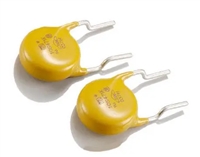ADSP-21xx
Flexible Fr am ing—T he SPORT s have independent framing
for the transmit and receive functions; each function can run in
a frameless mode or with frame synchronization signals inter-
nally generated or externally generated; frame sync signals may
be active high or inverted, with either of two pulse widths and
timings.
of the ADSP-2111. T he two status registers provide status
information to both the ADSP-2111 and the host processor.
HSR7 contains a software reset bit which can be set by both the
ADSP-2111 and the host.
HIP transfers can be managed using either interrupts or polling.
T he HIP generates an interrupt whenever an HDR register
receives data from a host processor write. It also generates an
interrupt when the host processor has performed a successful
read of any HDR. T he read/write status of the HDRs is also
stored in the HSR registers.
D iffer ent Wor d Lengths—Each SPORT supports serial data
word lengths from 3 to 16 bits.
Com panding in H ar dwar e—Each SPORT provides optional
A-law and µ-law companding according to CCIT T recommen-
dation G.711.
T he HMASK register bits can be used to mask the generation of
read or write interrupts from individual HDR registers. Bits in
the IMASK register enable and disable all HIP read interrupts
or all HIP write interrupts. So, for example, a write to HDR4
will cause an interrupt only if both the HDR4 Write bit in
HMASK and the HIP Write interrupt enable bit in IMASK are
set.
Flexible Inter r upt Schem e—Receive and transmit functions
can generate a unique interrupt upon completion of a data word
transfer.
Autobuffer ing with Single-Cycle O ver head—Each SPORT
can automatically receive or transmit the contents of an entire
circular data buffer with only one overhead cycle per data word;
an interrupt is generated after the transfer of the entire buffer is
completed.
T he HIP provides a second method of booting the ADSP-2111
in which the host processor loads instructions into the HIP. T he
ADSP-2111 automatically transfers the data, in this case
opcodes, to internal program memory. T he BMODE pin
determines whether the ADSP-2111 boots from the host
processor through the HIP or from external EPROM over the
data bus.
Multichannel Capability (SP O RT0 O nly)—SPORT 0
provides a multichannel interface to selectively receive or
transmit a 24-word or 32-word, time-division multiplexed serial
bit stream; this feature is especially useful for T 1 or CEPT
interfaces, or as a network communication scheme for multiple
processors. (Note that the ADSP-2105 includes only SPORT 1,
not SPORT 0, and thus does not offer multichannel operation.)
Inter r upts
T he ADSP-21xx’s interrupt controller lets the processor
respond to interrupts with a minimum of overhead. Up to three
external interrupt input pins, IRQ0, IRQ1, and IRQ2, are
provided. IRQ2 is always available as a dedicated pin; IRQ1 and
IRQ0 may be alternately configured as part of Serial Port 1. T he
ADSP-21xx also supports internal interrupts from the timer, the
serial ports, and the host interface port (on the ADSP-2111).
T he interrupts are internally prioritized and individually
maskable (except for RESET which is non-maskable). T he
IRQx input pins can be programmed for either level- or edge-
sensitivity. T he interrupt priorities for each ADSP-21xx
processor are shown in T able III.
Alter nate Configur ation—SPORT 1 can be alternatively
configured as two external interrupt inputs (IRQ0, IRQ1) and
the Flag In and Flag Out signals (FI, FO).
H ost Inter face P or t (AD SP -2111)
T he ADSP-2111 includes a Host Interface Port (HIP), a
parallel I/O port that allows easy connection to a host processor.
T hrough the HIP, the ADSP-2111 can be accessed by the host
processor as a memory-mapped peripheral. T he host interface
port can be thought of as an area of dual-ported memory, or
mailbox registers, that allows communication between the
computational core of the ADSP-2111 and the host computer.
T he host interface port is completely asynchronous. T he host
processor can write data into the HIP while the ADSP-2111 is
operating at full speed.
T he ADSP-21xx uses a vectored interrupt scheme: when an
interrupt is acknowledged, the processor shifts program control
to the interrupt vector address corresponding to the interrupt
received. Interrupts can be optionally nested so that a higher
priority interrupt can preempt the currently executing interrupt
service routine. Each interrupt vector location is four instruc-
tions in length so that simple service routines can be coded
entirely in this space. Longer service routines require an
additional JUMP or CALL instruction.
T hree pins configure the HIP for operation with different types
of host processors. T he HSIZE pin configures HIP for 8- or 16-
bit communication with the host processor. HMD0 configures
the bus strobes, selecting either separate read and write strobes
or a single read/write select and a host data strobe. HMD1
selects either separate address (3-bit) and data (16-bit) buses or
a multiplexed 16-bit address/data bus with address latch enable.
T ying these pins to appropriate values configures the ADSP-
2111 for straight-wire interface to a variety of industry-standard
microprocessors and microcomputers.
Individual interrupt requests are logically ANDed with the bits
in the IMASK register; the highest-priority unmasked interrupt
is then selected.
T he interrupt control register, ICNT L, allows the external
interrupts to be set as either edge- or level-sensitive. Depending
on bit 4 in ICNT L, interrupt service routines can either be
nested (with higher priority interrupts taking precedence) or be
processed sequentially (with only one interrupt service active at
a time).
T he HIP contains six data registers (HDR5-0) and two status
registers (HSR7-6) with an associated HMASK register for
masking interrupts from individual HIP data registers. T he HIP
data registers are memory-mapped in the internal data memory
–6–
REV. B






 PCF8574资料解读:主要参数分析、引脚说明
PCF8574资料解读:主要参数分析、引脚说明

 AD637数据手册解读:主要特性、引脚及其功能解读、电气参数
AD637数据手册解读:主要特性、引脚及其功能解读、电气参数

 ADUM1201资料手册解读:参数分析、引脚说明、应用分析
ADUM1201资料手册解读:参数分析、引脚说明、应用分析

 一文带你了解压敏电阻器在直流电路中的过压保护作用
一文带你了解压敏电阻器在直流电路中的过压保护作用
